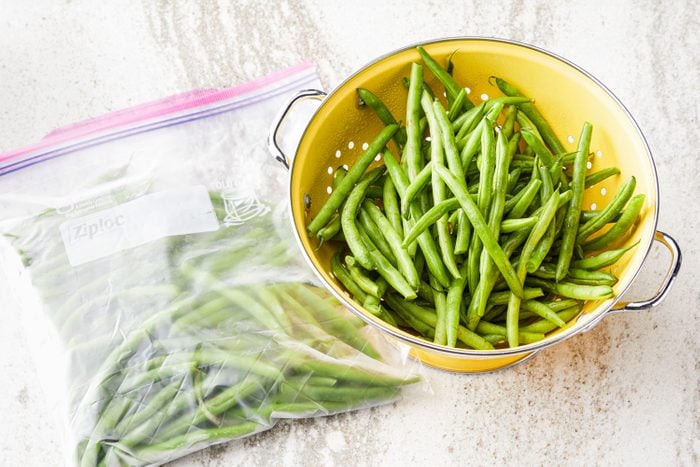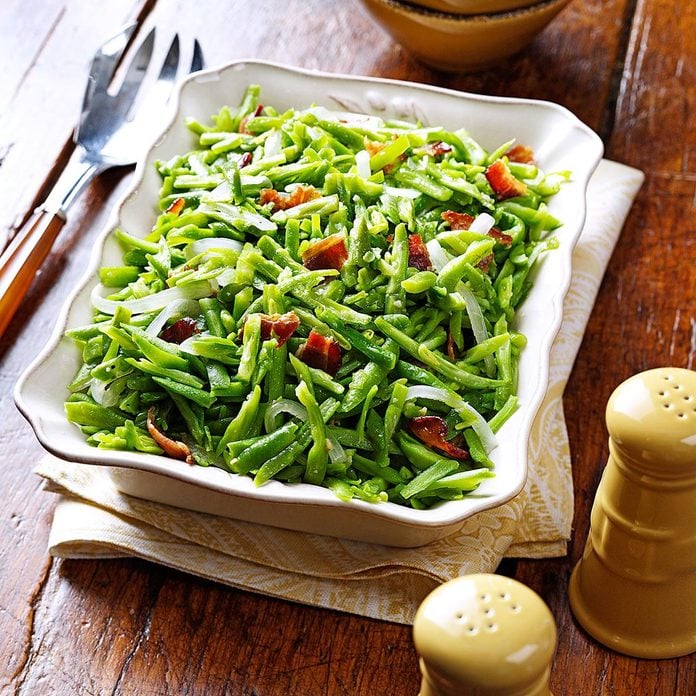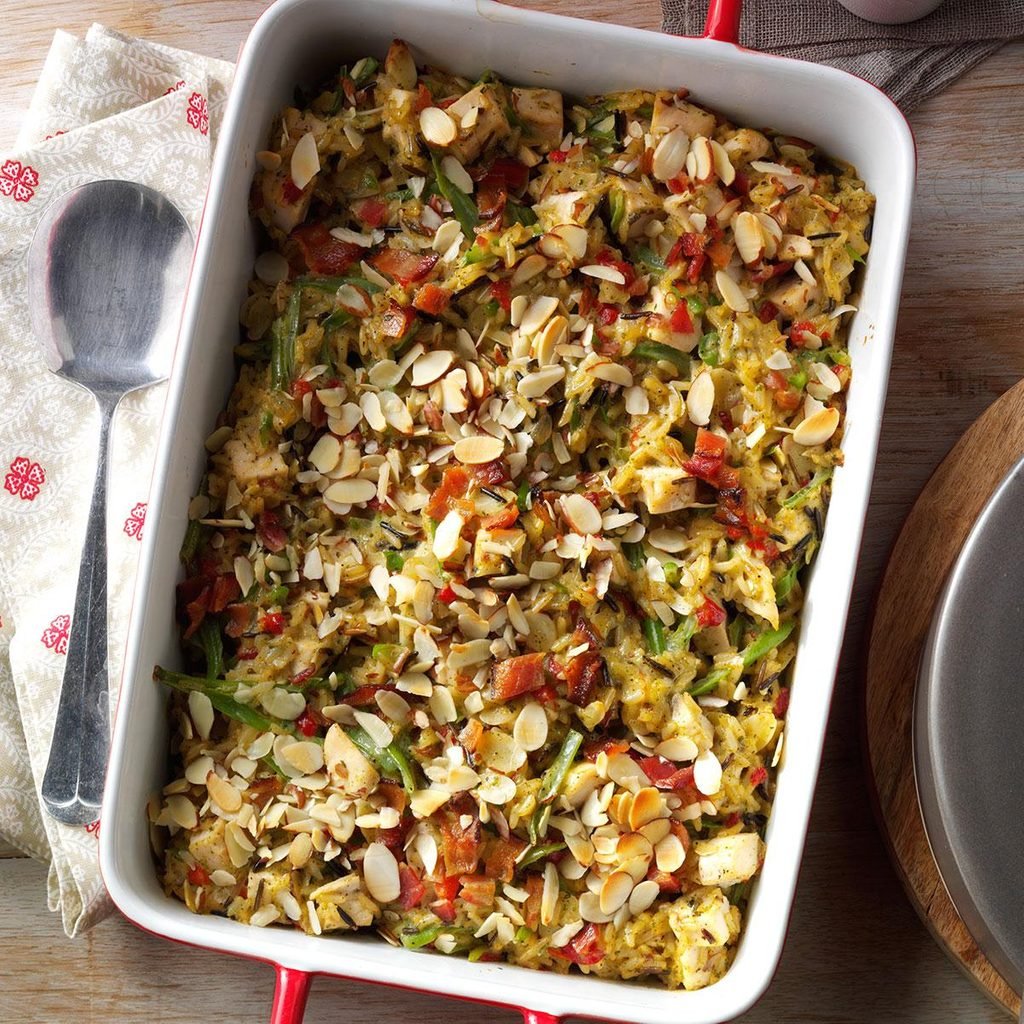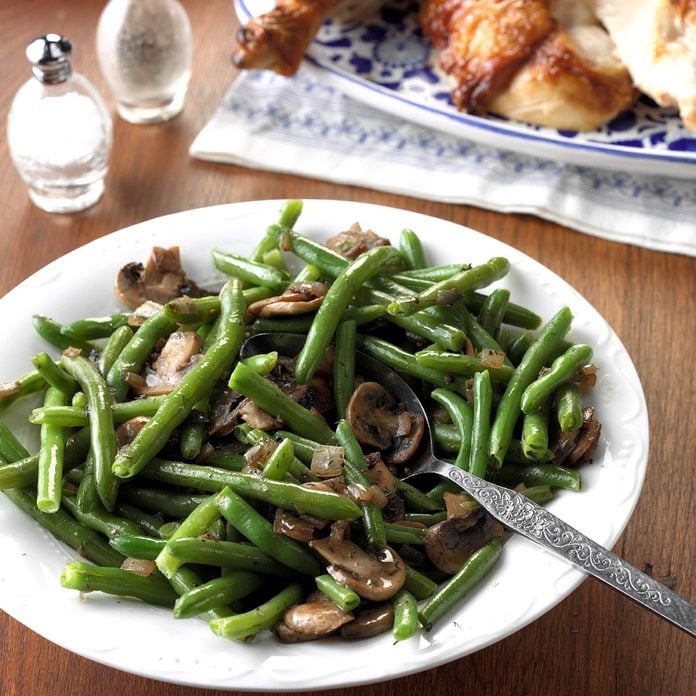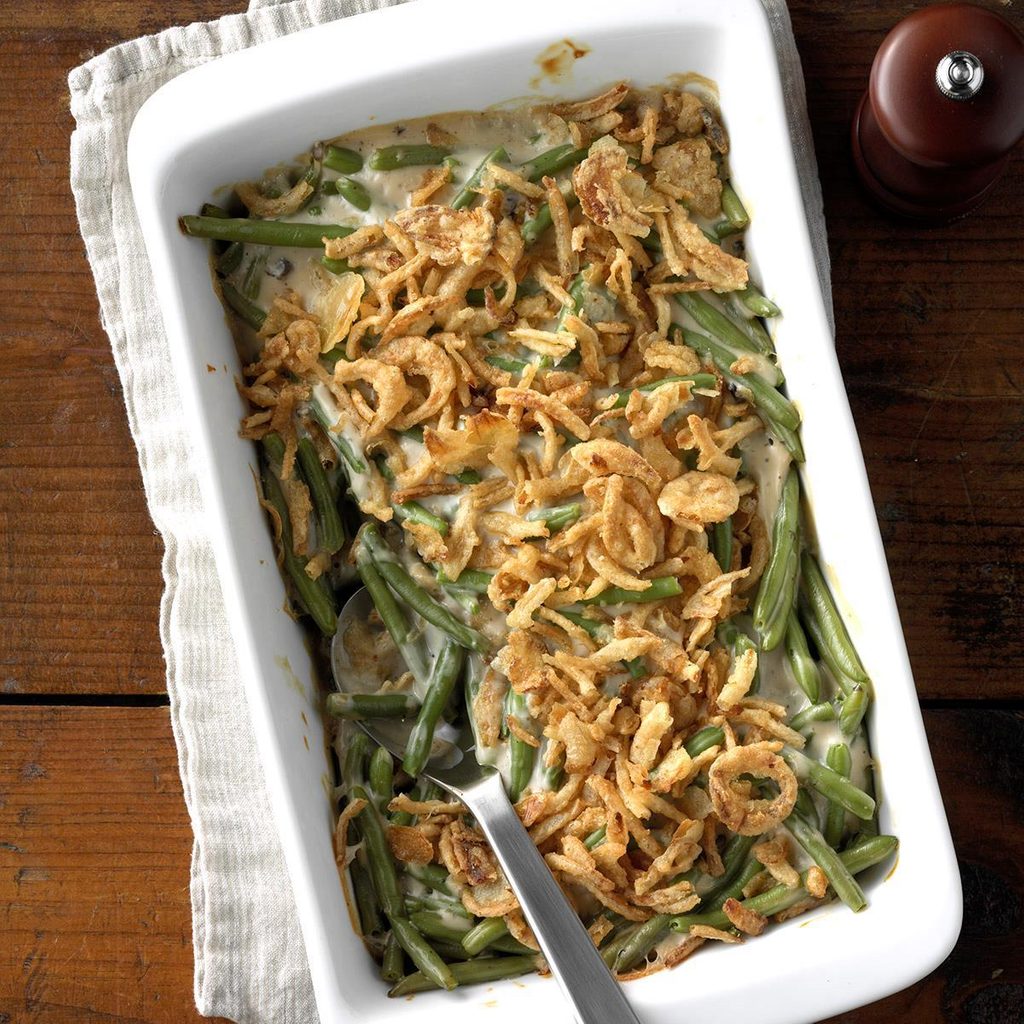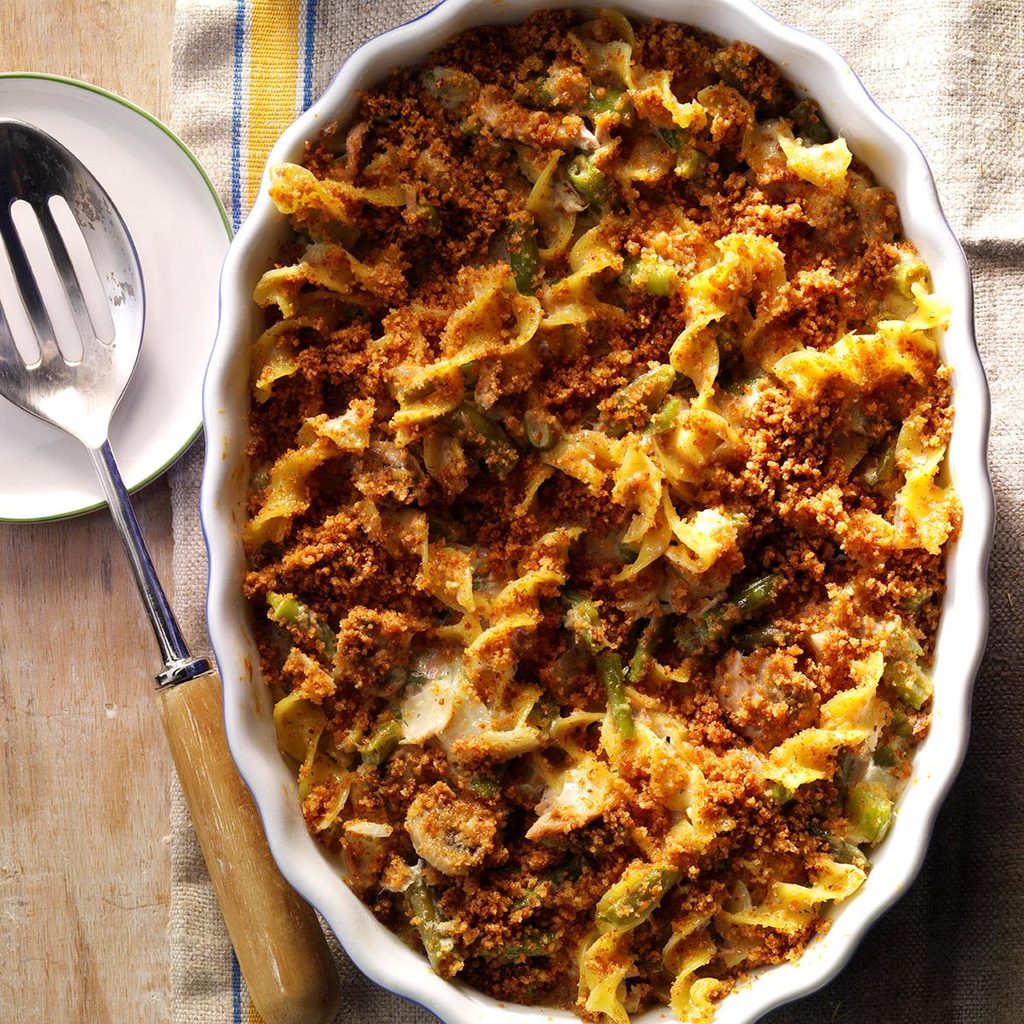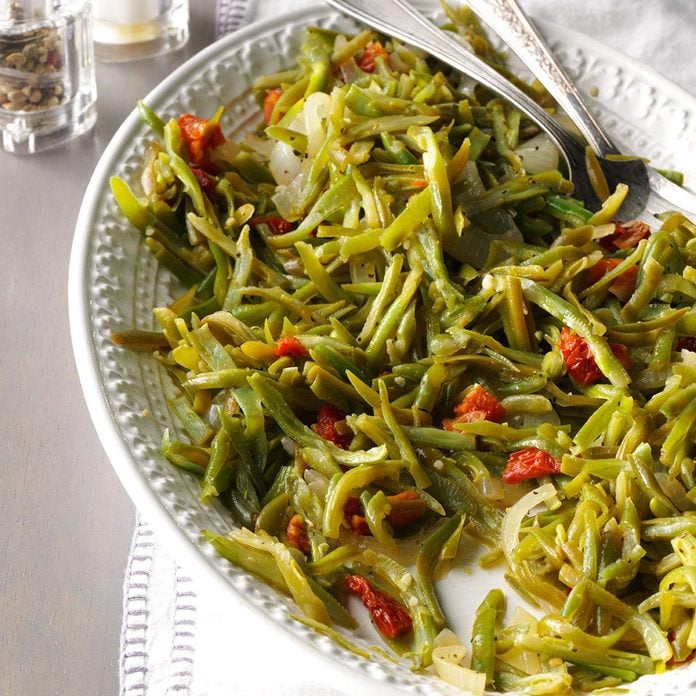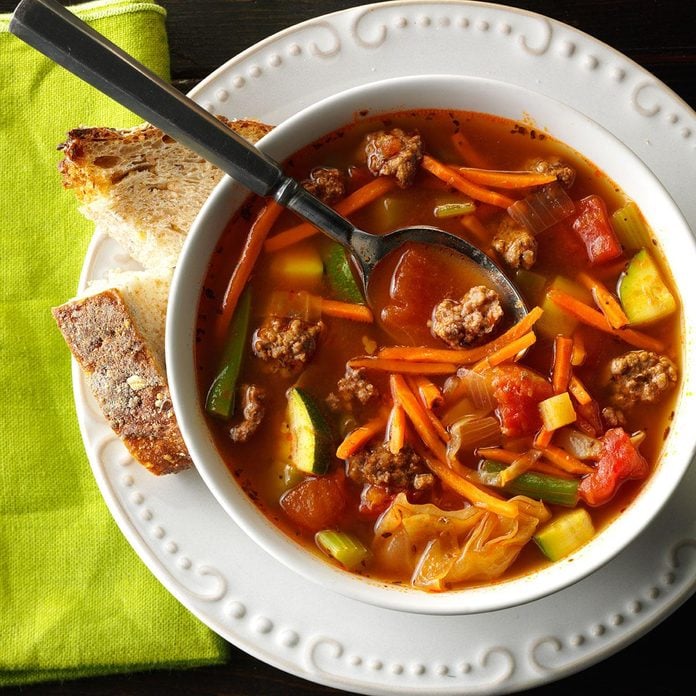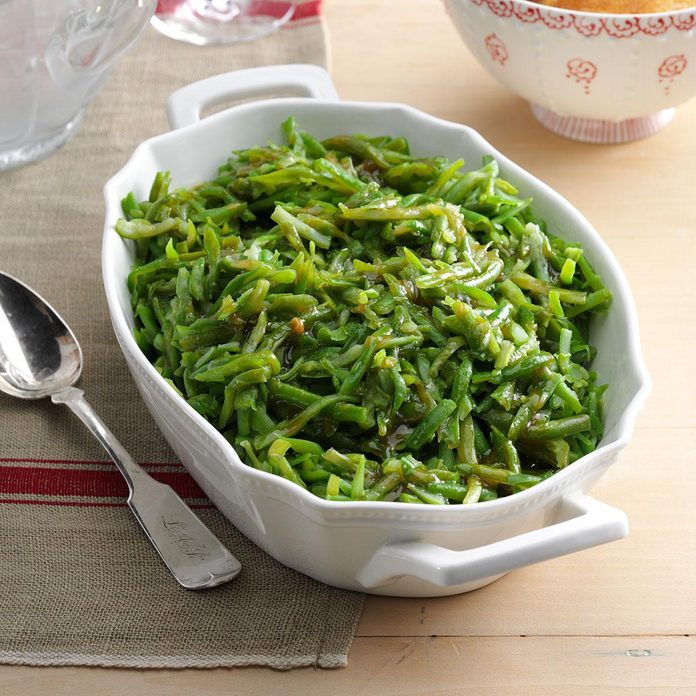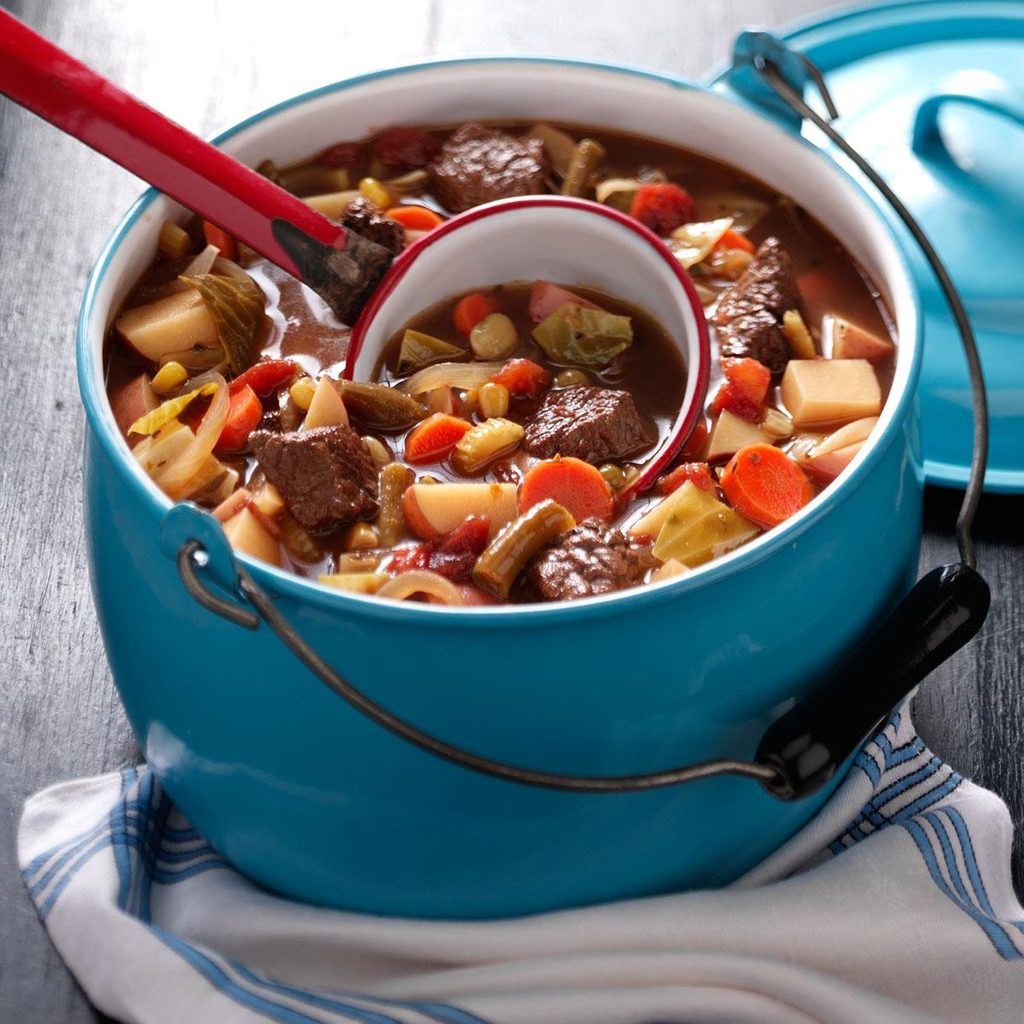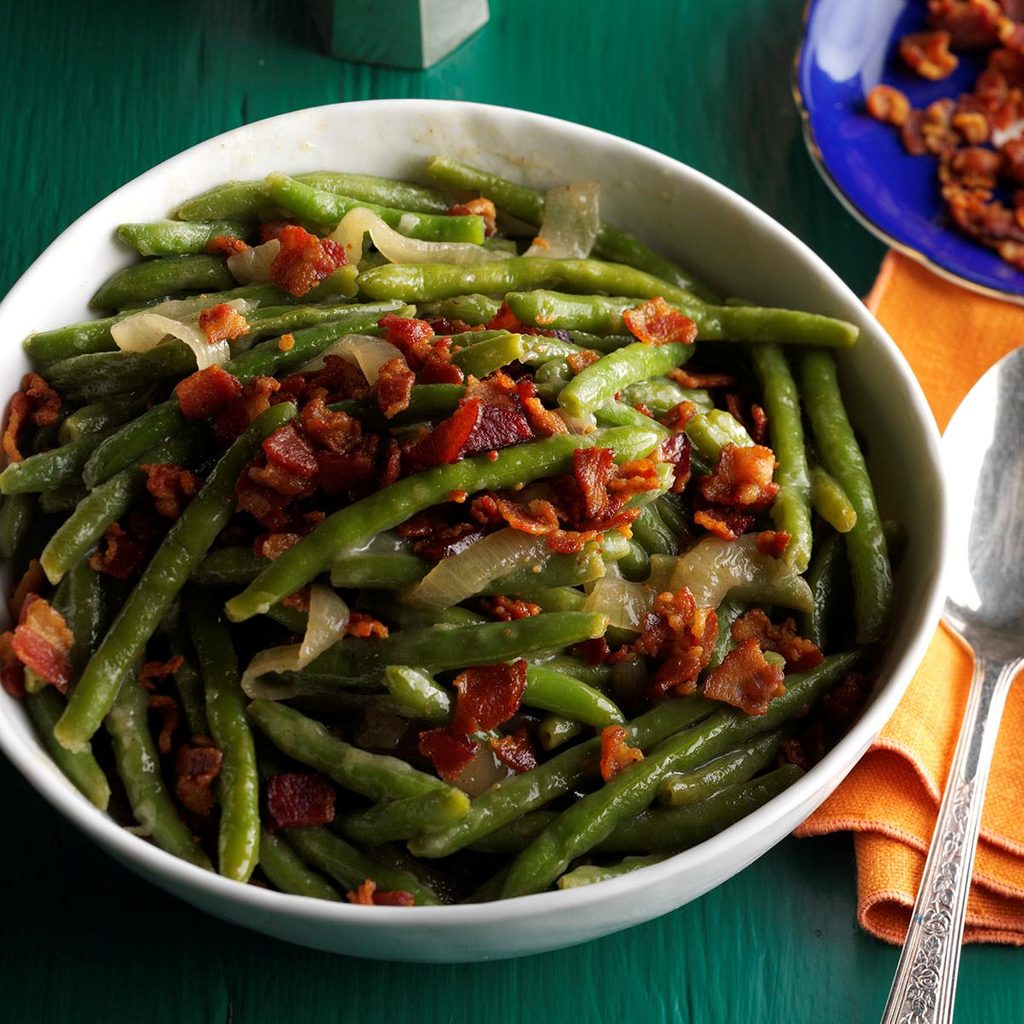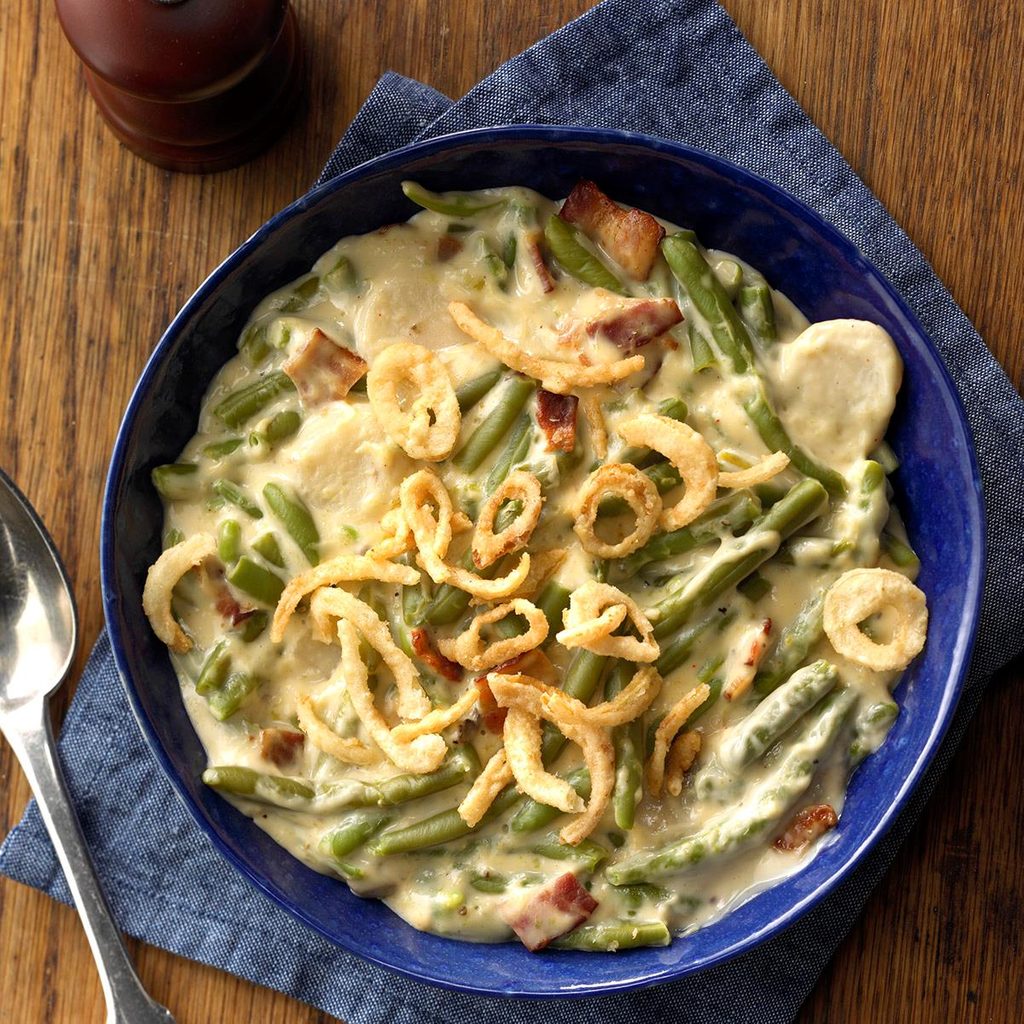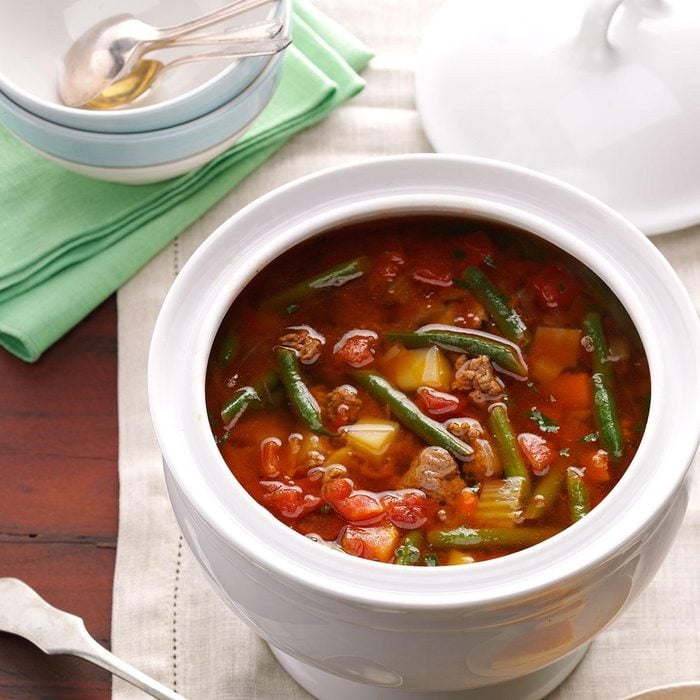On our little homestead in Northern Vermont, we try to grow all of the vegetables that we’ll need for an entire year. The garden is beautiful, but it’s sometimes overwhelming—I’m a notorious over-planter; it’s normal to have 120 tomato plants, right? And tomato plants aren’t the only thing we have a plethora of. We have pounds and pounds of beautiful green, yellow and purple beans ripening all at the same time!
Let’s talk about how to freeze green beans so none of our bounty goes to waste. I love making garlicky and spicy pickled recipes, but there are only so many vinegar-soaked beans one can eat. Freezing green beans is a great way to ensure that they last, and you can use them in so many green bean recipes when you’re ready to thaw them.
How to Choose Green Beans for Freezing
Whenever you plan to freeze fruits and vegetables, it’s important to choose produce of very high quality. For this task, you’ll want to select beans that are smooth, brightly colored, blemish-free and not too large. If you can see the bean seeds swelling inside of the pod, it means the beans are starting to mature and won’t be as tender as they were when they were young.
Uniformity can be helpful too. I wouldn’t spend too much time sorting beans by size, but if you roughly divide the bigger and smaller beans into piles and start cooking the larger ones first, you’ll end up with a more consistent product.
How to Freeze Green Beans
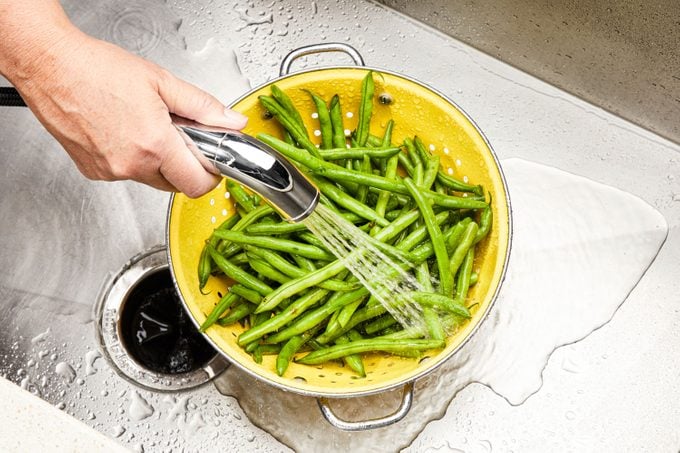 TMB Studio
TMB Studio
The process of freezing beans is simple. Rinse the beans, and decide if you’d rather leave them whole or cut off their tops and tails and chop them into uniform pieces. This all depends on how you’d like to use your beans later. I generally leave mine whole. If you do see any blemishes on the beans, remove them before processing.
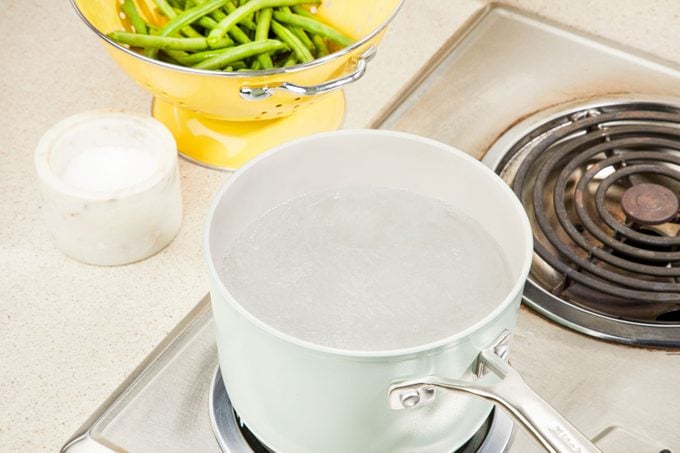 TMB Studio
TMB Studio
Bring a large pot of salted water to a boil. Salting the water until it tastes briny will make the beans taste delicious, and some say it also helps to prevent vitamins and minerals from leaching from the beans into the blanching water.
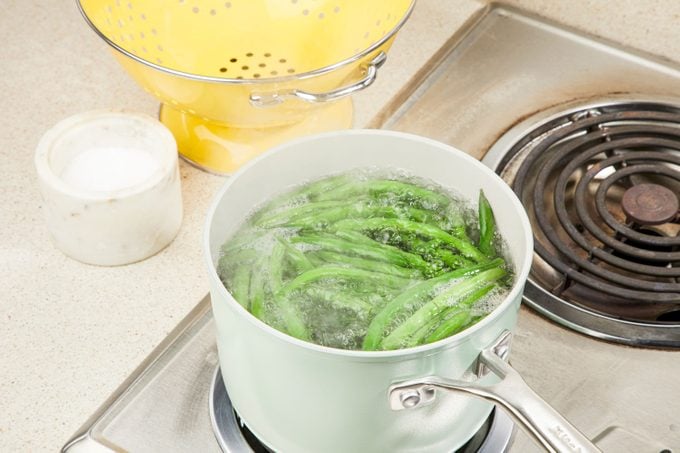 TMB Studio
TMB Studio
While you’re waiting for the water to boil, place a colander in the sink, and prepare a nice big ice bath in a mixing bowl. You’ll use this to shock the beans in cold water as soon as they’re done cooking.
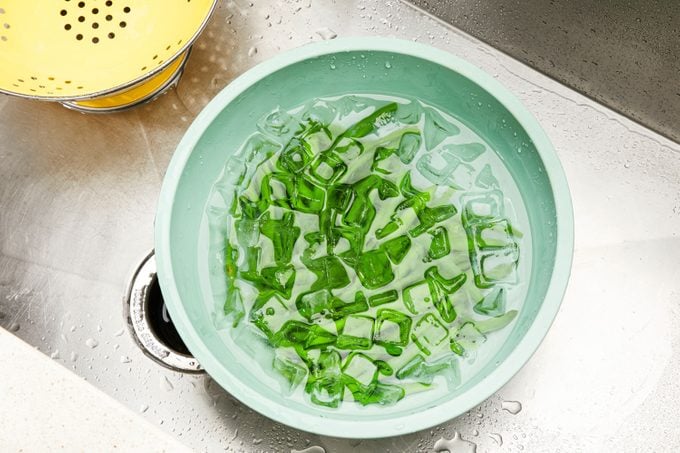 TMB Studio
TMB Studio
When the water boils, add the larger beans, followed about 30 seconds later by the smaller beans. Cook until the beans are exceptionally bright green (or bright yellow, if they’re wax beans), pour the beans into the colander, shake to remove some of the hot water, and immediately plunge them into the ice bath.
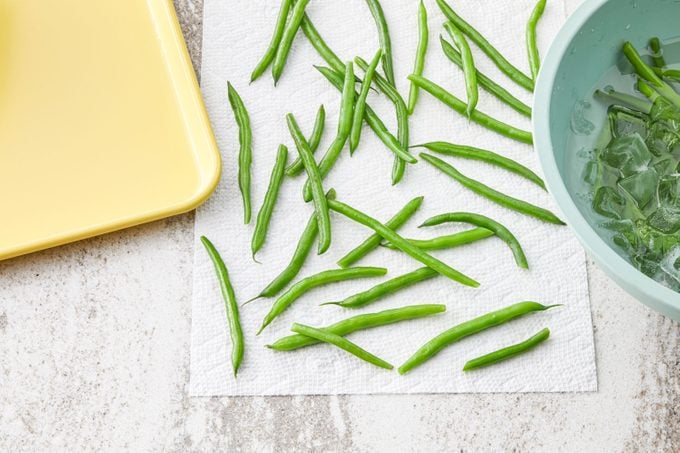 TMB Studio
TMB Studio
When the beans are cool, spread them out on kitchen towels or paper towels until they are dry, and then freeze them on baking sheets in single layers. Once they are frozen, the beans can be moved into freezer-safe resealable plastic bags or vacuum sealed for longer-term storage.
Tips for Freezing Green Beans
- Skip the blanching: In a hurry? You can freeze washed and dried raw green beans, but they may have a shorter shelf life. Why? Because blanching denatures enzymes that cause produce to break down. If you do freeze raw beans, make sure to cook them once thawed since you can’t eat raw green beans.
- Try sauteing: You can also freeze lightly sauteed beans. However, these beans won’t be cooked as uniformly as blanched beans, so they may not have an ideal texture when they defrost.
- Keep track of dates: Label your beans (and anything else in your freezer) so that you know when you froze them, and whether or not they were cooked before freezing.
- Vacuum seal the beans: This step requires another tool and makes the preservation process take longer, but it’s a great way to avoid unsightly freezer burn and extend the life of your produce even further.
How to Thaw Green Beans
Some recipes will specifically call for green beans that are thawed, but most of the time, you can use frozen green beans to use up your stash.
If you do need to thaw your green beans, you can safely do so by pouring the beans into a colander and rinsing them in cold water until they are no longer frozen. Another option is to place the freezer bag in the fridge the day before you want to use the vegetables. When you’re in a hurry, gently defrost them in the microwave.
If the beans will be served as a side dish, I like to toss them with oil while still frozen, and roast them in a 425°F oven or saute them in a very hot pan until they take on a little bit of color. The beans should still be bright green, but with patches of dark charred bits.
You can also add frozen beans directly to soups like slow-cooker minestrone and stews like this satisfying beef stew, or use them in cozy Thanksgiving green bean casseroles—you don’t have to wait for the holidays to enjoy them!
When should you not use frozen green beans? When a recipe explicitly calls for the beans to be fresh.
Best Recipes for Using Frozen Green Beans
Bacon and Garlic Green BeansAdding white wine, lemon juice and garlic gives a little kick to
green beans. It was enough to turn our old, traditional holiday side into a year-round favorite. —Shannon Reynoso, Bakersfield, California
Hearty Vegetable SoupA friend gave me the idea to use V8 juice in vegetable soup because it provides more flavor. My best vegetable soup recipe is perfect to prepare on a crisp autumn afternoon. —Janice Steinmetz, Somers, Connecticut
Company Vegetable CasseroleA neighbor passed this recipe on to me. I make the vegetable casserole for family dinners, reunions and potlucks, and the response is almost always the same when people taste it: "Can I have the recipe?" —Leora Clark, Lincoln, Nebraska
Chicken AmandineWith colorful green beans and pimientos, this attractive casserole is terrific for the holidays. This is true comfort food at its finest. —Kat Woolbright, Wichita Falls, Texas
Green Beans with ShallotsA package of frozen green beans makes these “dill-icious” green beans a fast and tasty accompaniment to almost any main course. —Linda Rabbit, Charles City, Iowa. Get to know if you can
eat raw green beans.
Hearty Beef Veggie SoupHere's a slow-cooked meal-in-one just perfect for chilly winter nights. It's nice to come home to a hearty soup that's ready to eat. It goes well with a fruit salad and bread. — Colleen Jubl, Dayton, Ohio
Chicken Rice SkilletPleasant seasonings and plenty of vegetables highlight this traditional chicken and rice pairing. Leftovers are great reheated in the microwave. —Jan Balata, Kilkenny, Minnesota
Green Bean CasseroleThis green bean casserole has always been one of my favorite dishes—it’s so easy to put together! You can make it before any guests arrive and keep it refrigerated until baking time. —Anna Baker, Blaine, Washington
Tuna Mushroom CasseroleI love to serve this dressed-up version of a tuna casserole. The green beans add nice texture, color and flavor. The first time I made this dish, my uncle asked for seconds even though tuna casseroles are not usually his favorite.
—Jone Furlong, Santa Rosa, California
Mom's Chicken Noodle SoupMy mother was a pastor's wife, and she did a lot of cooking for potlucks. This recipe is one she created herself. I serve it frequently to my husband and to our four children. Every one of them is a hearty eater! —Marlene Doolittle, Story City, Iowa
Zesty Garlic Green BeansThese green beans travel so well because they can either be served at room temperature or reheated at the party. —Christine Bergman, Suwanee, Georgia
Baked Shepherd's CasseroleAll my kids are grown and most are married, but they often come home for Sunday dinner, and their most requested meal is this casserole. When you get several people in the kitchen chopping, slicing and preparing, it comes together super fast—and you get to catch up on all the family happenings. —Beverly Matthews, Richland, Washington
Garden Vegetable Beef SoupThis soup is my go-to healthy lunch option. It's a great way to eat my vegetables, and it's so comforting during the cold winter months. —Dawn Donald, Herron, Michigan
Elegant Green BeansMushrooms and water chestnuts give new life to the ordinary green bean casserole. Every time I make it for friends, I'm asked to share the recipe. —Linda Poe, Sandstone, Minnesota
Turkey Dumpling SoupSimmering up a big pot of this soup is one of my favorite holiday traditions. This is a variation on a recipe my mom made while I was growing up. My husband and children can't get enough of the tender dumplings. —Debbie Wolf, Mission Viejo, California
Slow-Cooked Green BeansI spent hours in search of sides for a cooking demo to present to women from my church. These easy green beans became my star attraction. —Alice White, Willow Spring, North Carolina
Stuffin' MuffinsIf you love stuffing, you won’t be able to get enough of these fun muffin cups that not only make use of leftover stuffing but also green beans, turkey, mashed potatoes, cheddar and gravy. —Pauline Porterfield, Roxboro, North Carolina
Hearty Beef and Vegetable SoupWhen you need to feed a crowd, consider this beefy favorite loaded with both fresh and frozen veggies. —Sue Straughan, Prattville, Alabama
Tangy Bacon Green BeansMy grandmother’s Pennsylvania Dutch-style recipe turns plain old green beans into a tangy cross between three-bean and German potato salads. —Sharon Tipton, Casselberry, Florida
Minestrone with TurkeyI remember my mom making this soup; now I make it for my kids as often as I can. It's a good way to use up leftover vegetables. Sometimes I add a can of rinsed and drained kidney or garbanzo beans. —Angela Goodman, Kaneohe, Hawaii
Jazzed-Up Green Bean CasseroleAfter trying many variations of this old standby, I decided to give it a little kick. The crunchy texture from the veggies combines with bacon and melt-in-your-mouth cheese to make this dish a hit at any holiday get-together. —Stephan-Scott Rugh, Portland, Oregon
Saucy Green Bean BakeHere's a different way to serve green beans. It's a nice change of pace from plain vegetables. —June Formanek, Belle Plaine, Iowa
Tater Tot CasserolesGround beef, sausage and cheese make this tater tot casserole with green beans a crowd-pleaser. Cayenne pepper and hot Italian sausage give it a pleasant kick. —Ryan Jones, Chillicothe, Illinois
Savory Winter SoupEven my father, who doesn't particularly like soup, enjoys my full-flavored version of traditional vegetable soup. He asked me to share the recipe with Mom, and I gladly obliged! —Dana Simmons, Lancaster, Ohio
